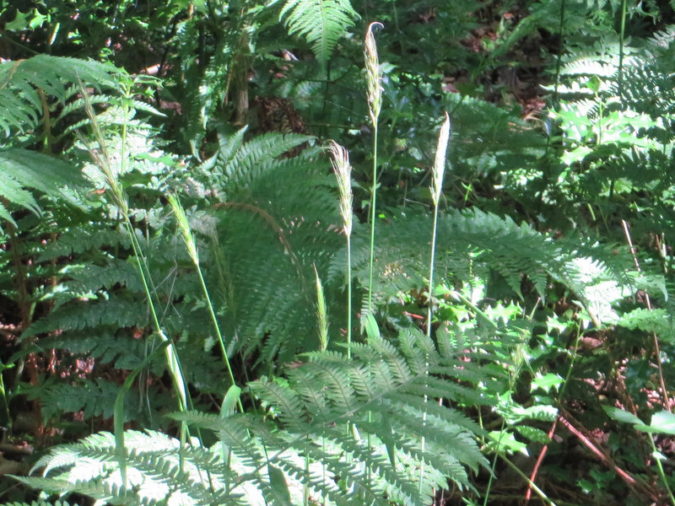Summer walks: Hagg Wood, Wednesday 24th August in the afternoon
Posted on 25th August 2016
We started by sitting in the sun looking at some old maps of the wood from 1853 to 1950 and discussing the changes in tracks and fencing of boundaries. Even though the wood looks wild to us there are layers and layers of human influence there.
The walk to the wood was via a trod, easy walking on the old stone flags but with much nettle leaning over the nar row path. We stopped to look at the fruits in the hedgerow and to taste hogweed seeds…I thought
row path. We stopped to look at the fruits in the hedgerow and to taste hogweed seeds…I thought
perhaps a hint of tangerine. This striking Magpie moth was spotted flitting around in the sunlight, although to be honest it is easier to see on a photo.
 At the bottom of a steep slope at the entrance to the wood Graeme Aldous (voluntary warden of the wood) said a few words about how the wood came into the ownership of the Woodland Trust. Nearby were several wild angelica plants in full flower and a small broad-leaved helleborine by the path.
At the bottom of a steep slope at the entrance to the wood Graeme Aldous (voluntary warden of the wood) said a few words about how the wood came into the ownership of the Woodland Trust. Nearby were several wild angelica plants in full flower and a small broad-leaved helleborine by the path.
We stopped at the footbridge over Hagg Beck and looked at the fallen leaves from the trees, which included a field maple, (also chocolate moment to help get back up the slope) and then walked back up to where the new path ran along the top of the wood where there was a huge old crab apple – we noticed it from spotting the fallen fruit on the path..and then looked up.
walked back up to where the new path ran along the top of the wood where there was a huge old crab apple – we noticed it from spotting the fallen fruit on the path..and then looked up.



Along the path someone named the King Alfred’s Cakes fungi, although at the time we were unable to identify the Dog Vomit Slime Mould which was a shame, though I do recall mentioning it looked like someone had been sick after eating a curry.

And so to our surprise star plant of the walk, the nationally scarce wood barley, of which I noticed a small patch when walking through the wood last week, but once we all had our eye in we noticed a lot more by the side of the new path until we left the wood.

An old (oak?) stump provided some thought on our quest to understand the story of the wood. How long does a stump take to decay? More than 50 years? 80? When was it cut down?
Towards the end of the wood we reached a point where all the trees were suddenly sycamores, a big change from the varied native species we had been seeing and sure enough when we looked on the maps this small part of the wood was marked as conifers in 1950.

On the walk back to Moorsholm we passed through a field of oats, looked at a disused railway that was never actually built, commented on shrubs in the hedge, were stared at by cows (or bullocks …I didn’t check), all watched me talking about secondary branching in field horsetail without falling asleep (it was a bit nerdy) and prodded at something ceramic in the soil…because we could.